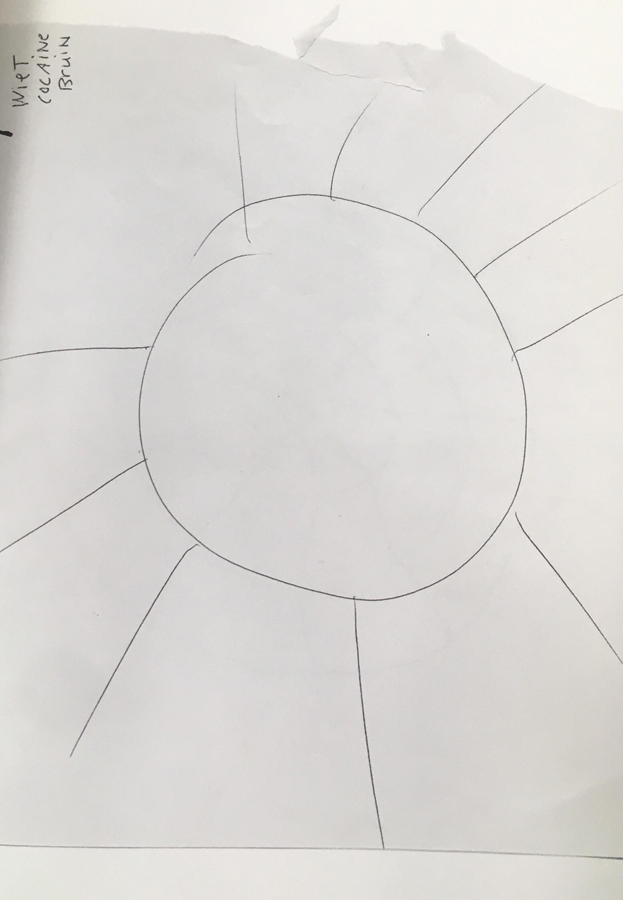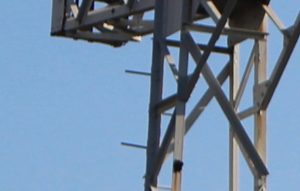

I sat by the bookshelf for less than a few minutes when it caught my eye.
Touching the earth and the sky. A small, thin, white book, with only the title on the cover and spine, in simple black type. It was squeezed between two books, towering beside it like skyscrapers, like a small alleyway just off the main road.
Somehow this book was meant to be mine for a day. Its small size meant I could easily slip it in my bag, pocket, under my arm, on top of some other books. Its blankness meant it didn’t clash with any of the covers of my other books or objects. A book that could manage to slip in anywhere, unnoticed, and hide comfortably for a while. I placed it on a pile of books I had lying around at home, and it looked like it had been there for years. I put it on the table in the living room with my notebook, so as not to forget to bring it the next morning, and it seemed to curl up its spine and go to sleep. I placed it in my bag and it slipped right under the cover, as if it had done it a thousand times before.
What made this book so naturally acceptable to its environment? I thought it was probably that it looked a bit insignificant: the combination of its small, thin shape; the white cover; the simple type. But this insignificance intrigued me. It was almost as if the book worked as a counter-weight: a blank page in all this information that was already surrounding me. Where each book I looked at was pouring out its message to me, this book seemed to suck its message back into itself, hiding it even when opened, and remaining its aura of blissful ignorance. It didn’t matter if I understood the book, if I had read it or knew what it was about, because its attraction was this mystery where I could read all that I wanted into its story.
I took the book to a place, and was curious how it would fit into a place that neither I nor it had seen before. I left my bag in a locker so the book travelled with me in my hand, clasped behind my back or dangling from my fingers. It didn’t seem to mind. The cleanness of the space fitted it surprisingly well, and it wasn’t long before it had made it clear to me that it wanted to be put down, in one particular spot by the window. At first, it looked slightly lost and vulnerable on the floor, but the longer I looked away and looked again, the more it blended in and seemed to breathe into its place. It managed to hide from my eyes at times, its reflection suddenly disappearing as I took a step forward, backward, but would suddenly reassure me by popping back into focus. I was losing it to its environment, and at the same time I had never seen it so in its place.
The moment came to take it back. I was convinced it would resist my touch, being so perfectly in its place by the window, but no sooner had I picked it up or the book folded into its position in my hand. Just as it had curled up on the table in my living room, now it rested in my palm as we travelled back to the bookshelf where I had first spotted it.
The books that had towered by its side before I couldn’t find anymore, the shelves having been rearranged with all the people searching through the library. But I knew now that there was no trouble in finding a new spot for this little book. Placed beside a window, a tower, a roadside or hovering in the sky, it would always manage to reflect its environment and tell the reader exactly what you had always wanted to hear.
In my library, you move your way through the books one on one. Each book functions simultaneously as a lock and key. You don’t know the doors it might open when you pick it from its place on the shelf. Even when you’ve skimmed the spine, recognised the author, taken in the title and flicked through its pages, you’re still under a false impression of knowing where the book might lead you. It’s only once you’ve managed to extract it from its place in the library, folded your fingers around the covers, travelled with it for a couple of days, immersed yourself in the letters and forgotten it on the train, that you start to discover what this book holds in store for you. And once the rhythm of opening and closing the story has come to its natural end, the book will lead you back to the library to be found in its new place, closing its door as softly as it opened, and unlocking the way to a new book. Only a system which has no system can enable this experience of true discovery.
And then you can touch the earth and the sky.





